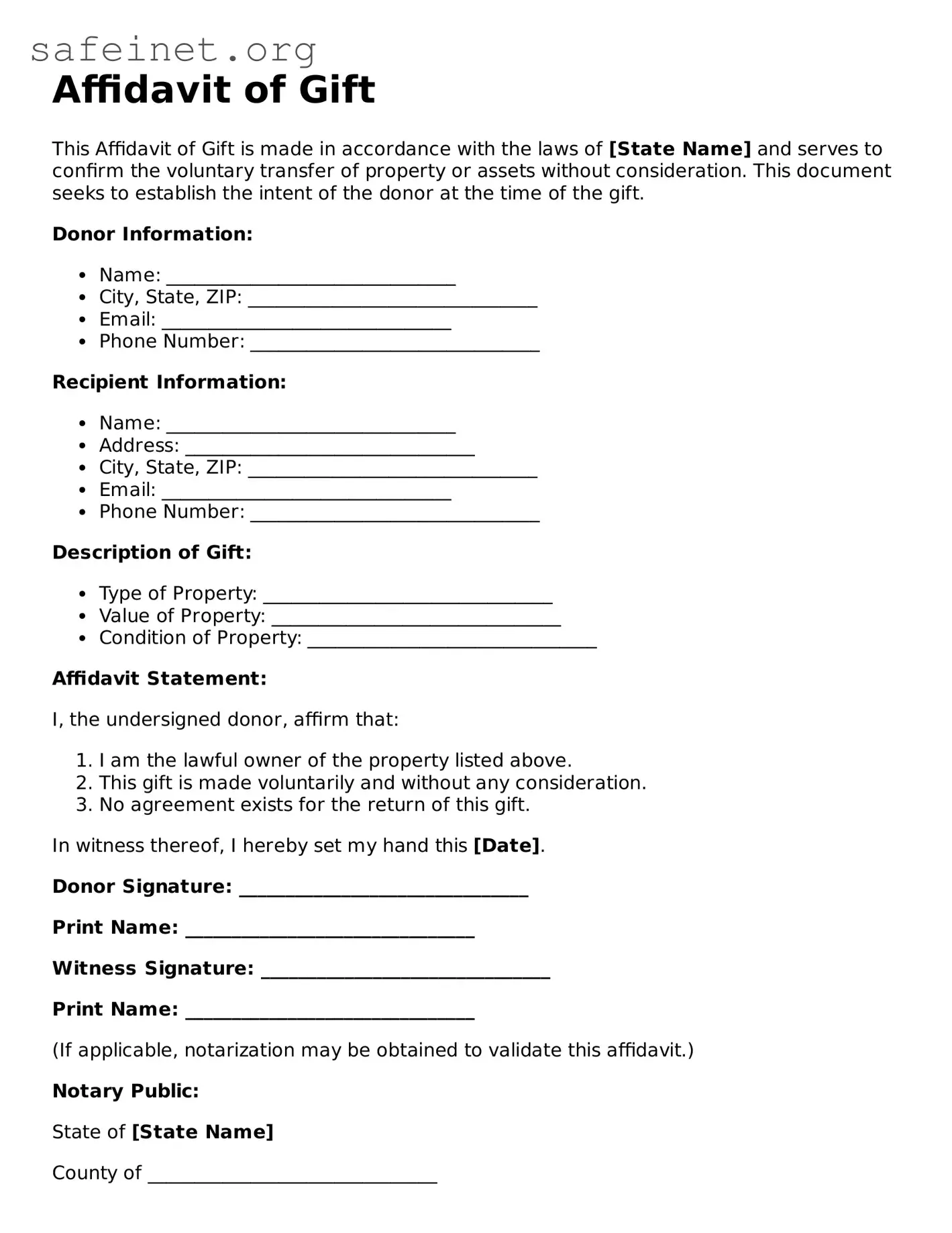The Affidavit of Gift form resembles the Warranty Deed, which is a document used to transfer ownership of real property. Both documents serve to confirm that the transfer is legitimate and free of encumbrances. They establish the intent to give, highlighting the genuine desire of the donor. While the Affidavit of Gift typically pertains to personal property, the Warranty Deed is specific to real estate transactions.
Another similar document is the Bill of Sale, which also facilitates the transfer of ownership. The Bill of Sale provides a receipt for goods or services exchanged, documenting the transaction. Both documents establish proof of ownership and detail the items transferred. However, the Bill of Sale is often used for tangible properties, such as vehicles and equipment, rather than for gifts.
The Gift Letter shares similarities with the Affidavit of Gift, primarily in their intent to document a gift transaction clearly. Gift Letters are often used in financial contexts, such as assisting with mortgage applications. They describe the amount given and affirm that no repayment is expected, mirroring the intent expressed in an Affidavit of Gift.
A Quitclaim Deed is another document related to property transfer but differs in its nature of ownership assurance. While the Affidavit of Gift confirms that a gift is being made without expectation of return, the Quitclaim Deed transfers whatever interest in property the grantor may have. Both documents convey ownership, but a Quitclaim Deed does not guarantee that the title is clear.
The Power of Attorney document allows one person to act on behalf of another in legal matters. Although it does not involve the outright transfer of property, it can facilitate similar transactions, including gifts. In this case, the person holding power can execute an Affidavit of Gift on behalf of the donor, illustrating how legal authority can influence gift-giving.
The Trust Agreement is a legal document that establishes a trust, involving the transfer of assets to a trustee for the benefit of a beneficiary. Both the Affidavit of Gift and Trust Agreement share the element of transferring ownership. However, the Trust Agreement provides for future management of the assets, whereas the Affidavit of Gift is a one-time declaration of a gift.
Another related document is the Donation Receipt, which serves as proof that a donation was made. Organizations often provide these receipts for tax purposes. Though similar in purpose, the Donation Receipt focuses on charitable contributions and typically lacks the specific legal implications found in an Affidavit of Gift.
Lastly, the Release of Liability form is similar in that both documents involve a transfer of rights. A Release of Liability indicates that one party waives any future claims against another party, often used in the context of activities or services. However, it does not typically relate to the gifting of property or assets as the Affidavit of Gift does, focusing more on risk management.
